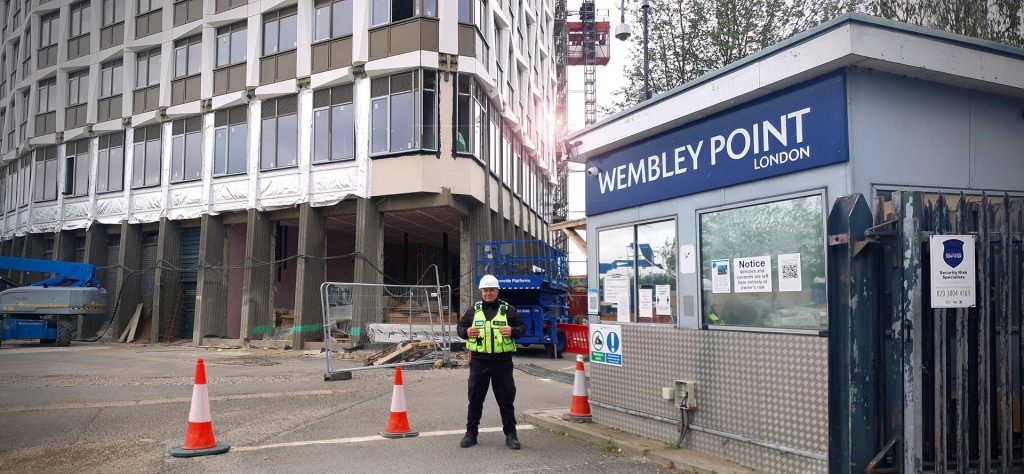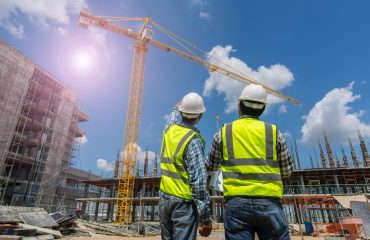Construction Site Security: Best Practices to Prevent break-in, Theft, Vandalism and Fire
Building sites are vibrant centers of activity where big projects are developed and big sums of money are at risk. But these locations are also easy pickings for accidents, theft, and vandalism. Because there are many people, pricey equipment, and valuable materials on the job site, maintaining project integrity and protecting lives are just as important as securing assets. This text covers various risks, discusses the significance of construction site security, and provides best practices for a strong security approach.
The Value of Security on Construction Sites
Because of their high value of on-site resources and open nature, construction sites are particularly vulnerable to a variety of security challenges. Strong security measures are essential for a number of reasons.
- Preventing vandalism and theft of expensive equipment, supplies, and machinery that are kept at construction sites, making them desirable targets for criminals. Additionally, vandalism might result in major delays and extra expenses.
- Providing for worker safety is crucial and cannot be neglected. Unauthorized entry might result in mishaps that cause harm or even death. Limiting the presence of unauthorized individuals can help to reduce these dangers.
- In the event of a security breach, work may be halted while materials that have been taken or damaged need to be replaced. Project completion is ensured by effective security.
- By lowering the danger of theft and damage, comprehensive security measures can result in lower insurance prices.
Safeguarding Intellectual property is another mandatory security measure. Construction sites occasionally contain sensitive plans or exclusive designs. Industrial espionage is prevented in part by security measures for these intellectual properties.
Typical Security Risks
Creating a strong security strategy starts with knowing what kinds of dangers construction sites encounter. Typical dangers consist of:
Theft
Vandalism
Trespassing
Sabotage
Accidents
Considerable losses may arise from both external and internal employee theft. Fuel, power tools, heavy machinery, and copper wiring are among the frequently targeted items.
Vandalism can take many different forms, from graffiti to property destruction, which can result in expensive repairs and project delays.
Unauthorized people on the property run the risk of causing harm, stealing goods, or becoming hurt, all of which can result in legal ramifications.
In order to cause delays in the project, rivals or irate workers may purposefully destroy equipment or interfere with work.
Unsupervised locations may turn dangerous, resulting in mishaps that inflict harm or death and may have financial and legal ramifications.
The Best Security Procedures for Construction Sites
Putting an all-encompassing security plan into action requires a combination of procedural, electronic, and physical safeguards. The following are some recommended procedures.
1. Implementing Physical Security Protocols
- Gates and Fencing: A basic security measure is to erect strong fencing around the site’s perimeter. When not in use, gates should be locked, and they should be watched over during business hours.
- Sufficient lighting makes it simpler to identify suspicious activities and discourages invaders. Motion-activated lights are especially useful.
- Visible signage warning people that the location is restricted and under surveillance can help keep prospective trespassers away.
- Set aside safe spaces to keep priceless tools and supplies. Make use of structures with reinforced doors or locked containers.
- Installing bollards and barriers can stop unauthorized cars from accessing a location and prevent goods and equipment from being taken by car thieves.
Security Measures Using Electronics
CCTV cameras placed throughout the property can aid in activity monitoring and serve as a deterrent to illegal activities. Make sure storage spaces, entrance points, and other important areas are covered by cameras.
- Install GPS tracking devices on large machinery and expensive equipment to keep an eye on their whereabouts and retrieve them in the event of theft.
- To limit access to authorized personnel only, implement access control systems like key cards, biometric scanners, or PIN numbers.
- When an unauthorized entry attempt is detected, alarm systems can notify law enforcement and security professionals. Think about motion-activated alarm systems and touch sensors for windows and doors.
3. Standard Security Procedures
- Workers should be taught to report suspicious conduct and to be on guard. Site security can be considerably improved by being aware of security procedures.
- Put in place a system that demands identity verification and sign-in. Make sure they are constantly escorted by authorized workers and issue visiting badges.
- Frequent Audits: To find vulnerabilities and make sure security procedures are being followed, conduct regular security audits.
- Keep a thorough record of all the tools, supplies, and machinery. Check and reconcile inventory on a regular basis to identify and quickly resolve any inconsistencies.
- Verify that contractors and vendors adhere to site security regulations and check them for past security infractions.
New Technologies for Security on Construction Sites
Technology is constantly improving the security of construction sites.
1. Unmanned aerial vehicles
Camera-equipped drones can be used for aerial surveillance, reaching hard-to-reach places and covering big areas. They can be especially helpful for real-time intrusion detection and monitoring large areas.
2. AI, or artificial intelligence
Real-time video analysis by AI-powered surveillance systems can spot odd activity and warn security staff of possible dangers. These systems are able to distinguish between legitimate site activity and unusual activity.
3. The Internet of Things (IoT)
A network of interconnected sensors and cameras can be built using IoT devices to provide complete site coverage. When these devices notice irregularities, they can notify central monitoring systems.
4. Self-governing Security Robots
Construction sites can be patrolled by robots outfitted with cameras and sensors, adding an extra degree of protection. They provide a dependable security presence because they can work in challenging circumstances and around the clock.

In summary
Construction site security is a complex issue that calls for a mix of procedural, electronic, and physical controls. Construction organizations may safeguard their resources, guarantee the security of their employees, and maintain project progress by comprehending prevalent risks and putting best practices into effect. New methods and instruments will improve construction sites’ security and make them safer and more effective as technology develops. Setting security as a top priority is crucial for building projects’ entire performance and integrity, not simply for property protection.



